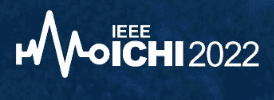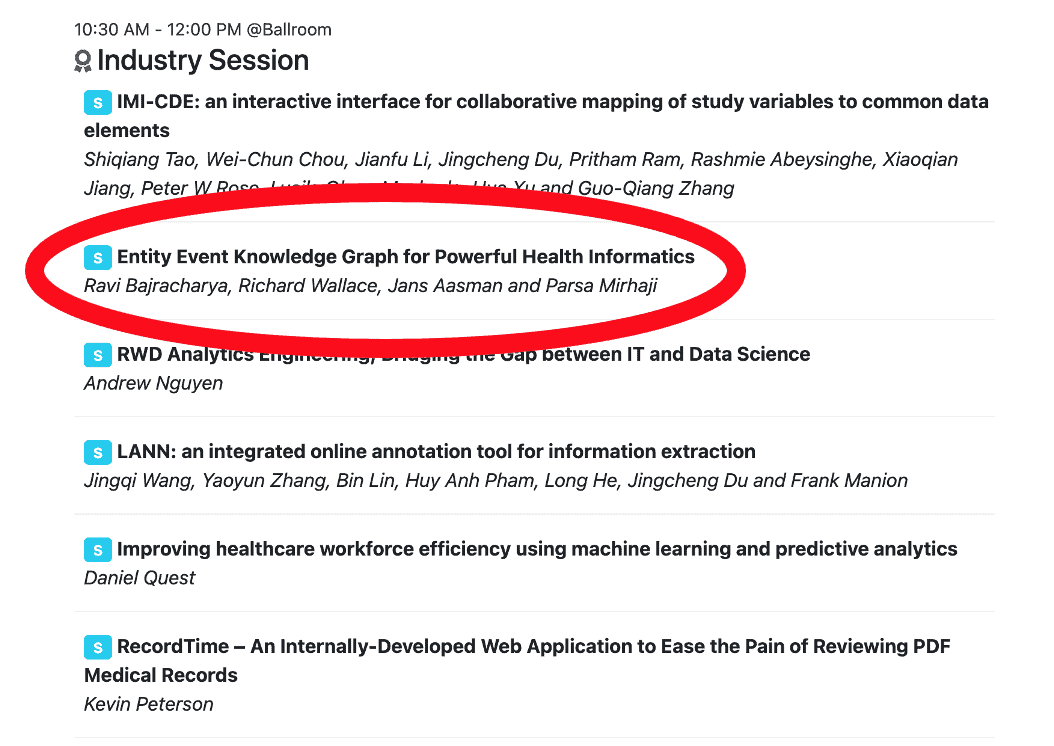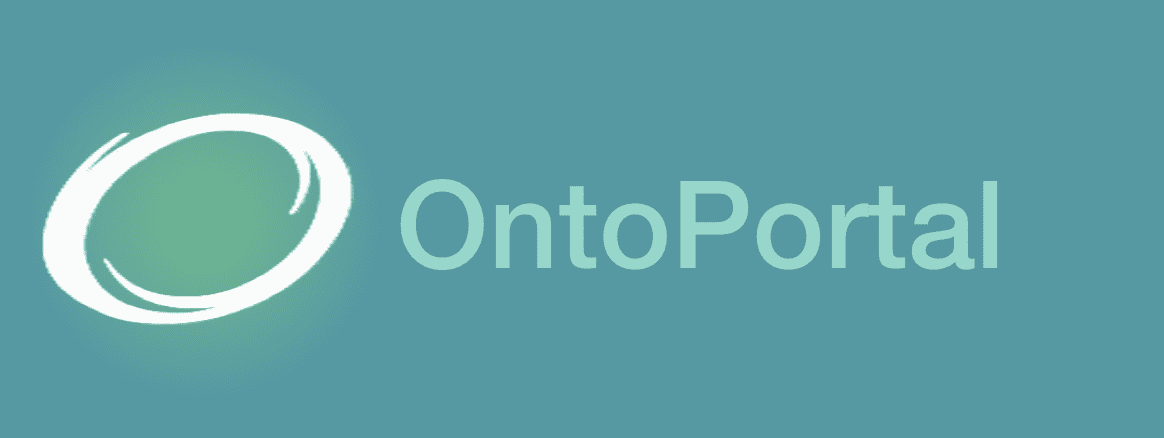FedShard™, Entity-Event Data Modeling and Browser-based Gruff Drives Infinite Data Integration, Holistic Insights and Complex Reasoning
Franz Inc., an early innovator in Artificial Intelligence (AI) and leading supplier of Semantic Graph Database technology for Knowledge Graph Solutions, today announced AllegroGraph 7, a breakthrough solution that allows infinite data integration through a patented approach unifying all data and siloed knowledge into an Entity-Event Knowledge Graph solution that can support massive big data analytics. AllegroGraph 7 utilizes unique federated sharding capabilities that drive 360-degree insights and enable complex reasoning across a distributed Knowledge Graph. Hidden connections in data are revealed to AllegroGraph 7 users through a new browser-based version of Gruff, an advanced visualization and graphical query builder.
“Large enterprises have Knowledge Graphs that are so big that no amount of vertical scaling will work,” said Jans Aasman, CEO of Franz Inc. “When these organizations want to conduct new big data analytics, it requires a new effort by the IT department to gather semi-usable data for the data scientists, which can cost millions of dollars, waste valuable time and still not provide a holistic data architecture for querying across all data. ETL, Data Lakes and Property Graphs only exacerbate the problem by creating new data silos. AllegroGraph 7 takes a holistic approach to mixed data, unifying all enterprise data with domain knowledge, including taxonomies, ontologies and industry knowledge – making queries across all data possible, while simplifying and accelerating feature extraction for machine learning.”
To support ubiquitous AI, a Knowledge Graph system will have to fuse and integrate data, not just in representation, but in context (ontologies, metadata, domain knowledge, terminology systems), and time (temporal relationships between components of data). The rich functional and contextual integration of multi-modal, predictive modeling and artificial intelligence is what distinguishes AllegroGraph 7 as a modern, scalable, enterprise analytic platform. AllegroGraph 7 is the first big temporal knowledge graph technology that encapsulates a novel entity-event model natively integrated with domain ontologies and metadata, and dynamic ways of setting the analytics lens on all entities in the system (patient, person, devices, transactions, events, and operations) as prime objects that can be the focus of an analytic (AI, ML, DL) process.
AI applications and complex reasoning analytics require information from both databases and knowledge bases that contain domain information, taxonomies and ontologies in order to conduct queries. Some large-scale knowledge bases cannot be sharded because they contain highly interconnected data. AllegroGraph 7 federates any shard with any large-scale knowledge base – providing a novel way to shard knowledge bases without duplicating knowledge bases in every shard. This approach creates a modern analytic system that integrates data in context (ontologies, metadata, domain knowledge, terminology systems) and time (temporal relationships between components of data). The result is a rich functional and contextual integration of data suitable for large scale analytics, predictive modeling, and artificial intelligence.
Financial institutions, healthcare providers, contact centers, manufacturing firms, government agencies and other large enterprises that use AllegroGraph 7 gain a holistic, future-proofed Knowledge Graph architecture for big data predictive analytics and machine learning across complex knowledge bases.
“AllegroGraph 7’s support of Entity-Event Data Modeling is the most welcome innovation and addition to our arsenal in reimagining healthcare and implementing Precision Medicine,” said Dr. Parsa Mirhaji, Director of Center for Health Data Innovations at the Albert Einstein College of Medicine and Montefiore Health System, NY “Precision Medicine is about moving away from statistical averages and broad-based patterns. It is about connecting many dots, from different contexts and throughout time, to support precision diagnosis and to recommend the precision care that can take into account all the subtle differences and nuisances of individuals and their personal experiences throughout their life. This technology is about saving lives, by leveraging data, context and analytics and is what Franz’s Entity-Event Data Modeling brings to the table.”
Dr. Mirhaji and his team at Montefiore Health System have developed the Patient-centered Analytic Learning Machine (PALM) using these capabilities to provide an enterprise platform for Artificial Intelligence and machine learning in healthcare that can support conversational AI, interpret data from EMR, natural language, and radiological images, all centered around life-time experiences of an individual patient. A single system that unifies all analytics and data from heterogeneous sources to manage appointments and prescriptions, triage patients with potential spinal cancer, respiratory failure, or sepsis, and provide just-in-time recommendations and personalized decision support for clinicians to improve patients’ outcomes.
Key capabilities in AllegroGraph 7 include:
Semantic Entity-Event Data Modeling
Big Data predictive analytics requires a new data model approach that unifies typical enterprise data with knowledge bases such as taxonomies, ontologies, industry terms and other domain knowledge. The Entity-Event Data Model utilized by AllegroGraph 7 puts core ‘entities’ such as customers, patients, students or people of interest at the center and then collects several layers of knowledge related to the entity as ‘events.’ The events represent activities that transpire in a temporal context. Using this novel data model approach, organizations gain a holistic view of customers, patients, students or important entities and the ability to discover deep connections, uncover new patterns and attain explainable results.
FedShard™ Speeds Complex Queries
Through a patented in-memory federation function, the results from each machine are combined so that the query process appears as if only one database is being accessed, although many different databases and data stores and knowledge bases are actually being accessed and returning results. This unique data federation capability accelerates results for highly complex queries across highly distributed data sets and knowledge bases.
Large-scale Mixed Data Processing
The AllegroGraph 7 big data processing system is able to scale massive amounts of domain knowledge data by efficiently associating domain knowledge with partitioned data through shardable graphs on clusters of machines. AllegroGraph 7 efficiently combines partitioned data with domain knowledge through an innovative process that keeps as much of the data in RAM as possible to speed data access and fully utilize the processors of the query servers.
Browser-based Gruff
Gruff’s powerful query and visualization capabilities are now available via a web browser and directly integrated in AllegroGraph 7. Gruff is the industry’s leading Knowledge Graph visualization tool that dynamically displays visual graphs and related links. Gruff’s ‘Time Machine’ provides users with an important capability to explore temporal connections and see how relationships are created over time. Users can build visual graphs that display the relationships in graph databases, display tables of properties, manage queries, connect to SPARQL Endpoints, and build SPARQL or Prolog queries as visual diagrams. Gruff can be downloaded separately or is included with the AllegroGraph v7 distribution.
High Performance Big Data Analytics
AllegroGraph 7 delivers high performance analytics by overcoming data processing issues related to disk versus memory access, uses processor core efficiency and updates domain knowledge databases across partitioned data systems in a highly efficient manner.
Gartner predicts “the application of graph processing and graph DBMSs will grow at 100 percent annually through 2022 to continuously accelerate data preparation and enable more complex and adaptive data science.” In addition, Gartner named graph analytics as a “Top 10 Data and Analytics Trend” to solve critical business priorities.” (Source: Gartner, Top 10 Data and Analytics Trends, November 5, 2019)
AllegroGraph 7 Availability
AllegroGraph 7 is immediately available directly from Franz Inc. Visit the AllegroGraph YouTube channel to see AllegroGraph in action.
Join AllegroGraph 7 Webinar
Franz Inc. will host a webcast entitled “Scalable Knowledge Graphs Using the New Distributed AllegroGraph 7.” Register for the Webinar.
Knowledge Graph Conference – May 4 – 7, 2020
Dr. Jans Aasman, CEO, Franz Inc., will be presenting a talk at the Knowledge Graph Conference entitled, “The Knowledge Graph that Listens” on May 7th at 1PM Eastern. Register for the Conference.
The Knowledge Graph Cookbook
Released April 22, 2020, this new book directs readers on why and how to build Knowledge Graphs that help enterprises use data to innovate, create value and increase revenue. The book is full of recipes and knowledge on the subject and features an interview with Dr. Jans Aasman, CEO, Franz Inc. in the Expert Opinion section. Get a copy of the book.
 ICHI 2022 is a premier community forum concerned with the application of computer science, information science, data science, and informatics principles, as well as information technology, and communication science and technology to address problems and support research in healthcare, medicine, life science, public health, and everyday wellness.
ICHI 2022 is a premier community forum concerned with the application of computer science, information science, data science, and informatics principles, as well as information technology, and communication science and technology to address problems and support research in healthcare, medicine, life science, public health, and everyday wellness.



 The notion of sharding has become increasingly crucial for selecting and optimizing database architectures. In many cases, sharding is a means of horizontally distributing data; if properly implemented, it results in near-infinite scalability. This option enables database availability for business continuity, allowing organizations to replicate databases among geographic locations. It’s equally useful for load balancing, in which computational necessities (like processing) shift between machines to improve IT resource allocation.
The notion of sharding has become increasingly crucial for selecting and optimizing database architectures. In many cases, sharding is a means of horizontally distributing data; if properly implemented, it results in near-infinite scalability. This option enables database availability for business continuity, allowing organizations to replicate databases among geographic locations. It’s equally useful for load balancing, in which computational necessities (like processing) shift between machines to improve IT resource allocation. Read the
Read the 
